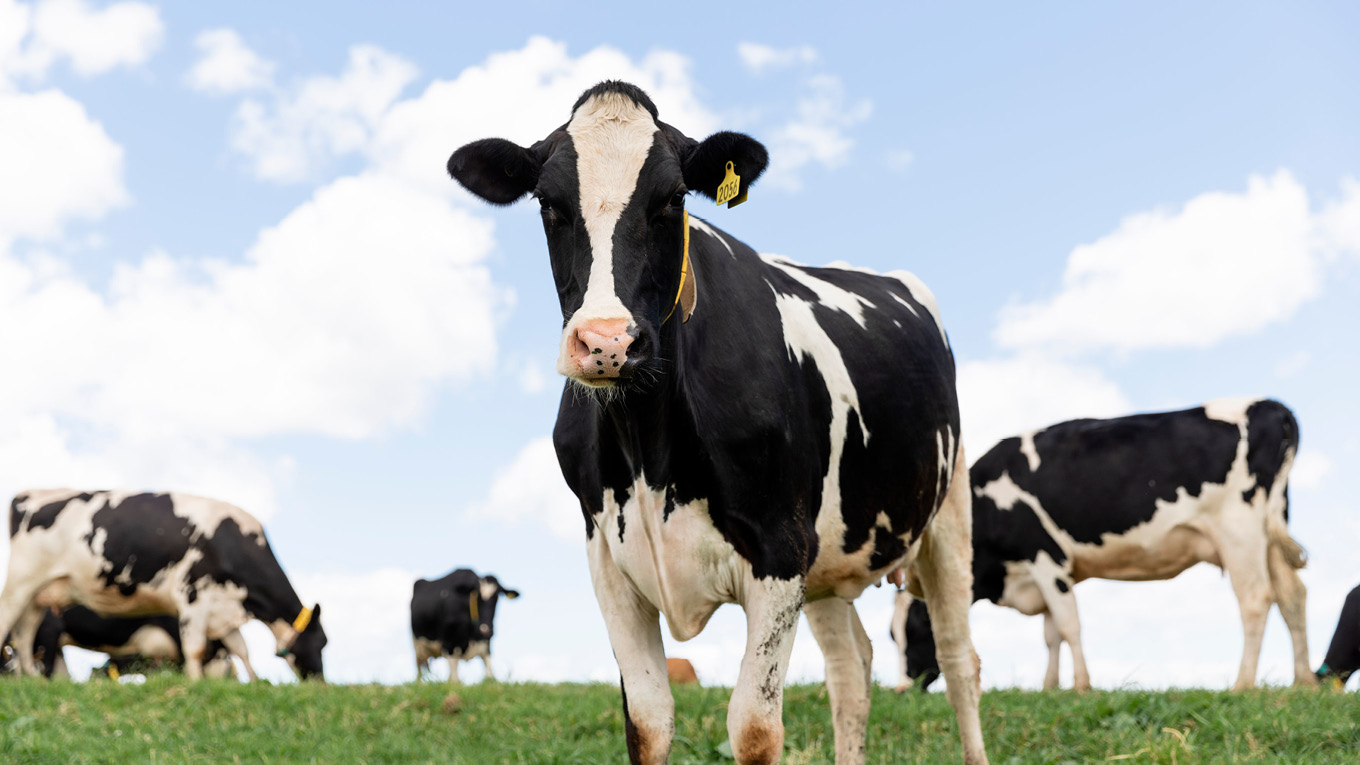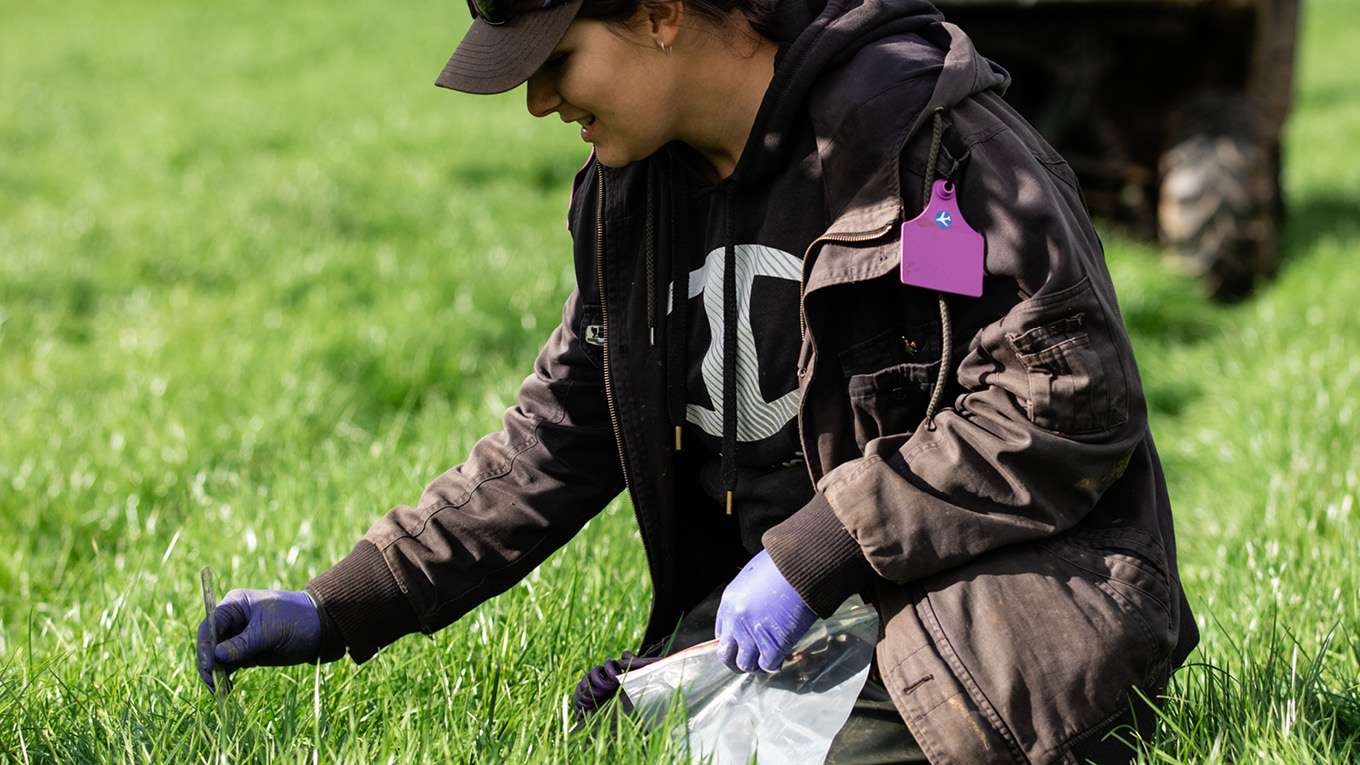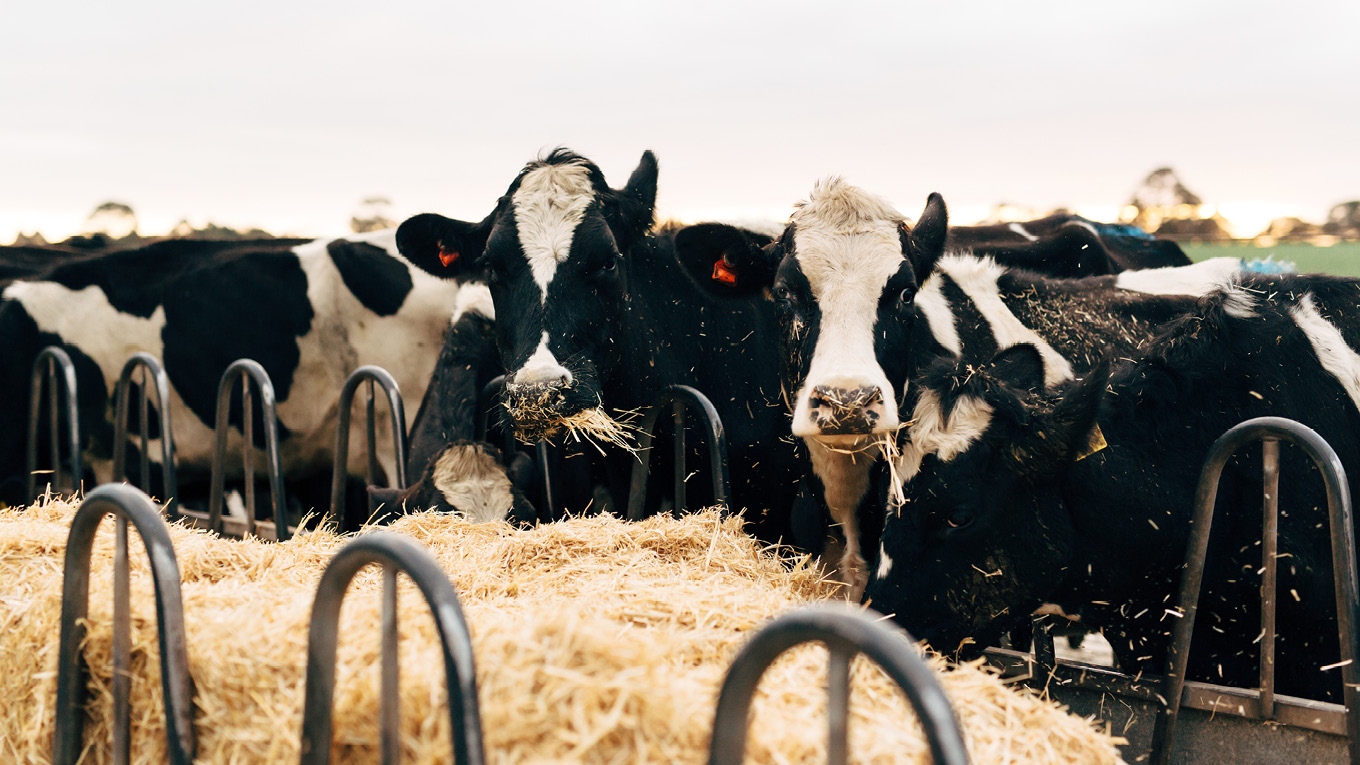Dairy Cow Nutrition
Pasture, forages, crops and supplementary feeds are the cornerstones of good nutrition management.
Farmers used to using hay and grain might not be used to thinking of a balanced diet in these terms. Essentially, a cow's diet is primarily made up of energy, protein and fibre. It is the proportions of each that determine if the diet is nutritionally balanced.
By putting them all together correctly, dairy farmers can provide superior nutrition for their herd for optimal productivity and health.
Diets that include more than just pasture need to be:
- Nutritionally balanced
- Cost-effective
- Palatable
Utilising the skills of a nutrition advisor can help to achieve the best results as diets can be complicated.
More information is available in Dairy Australia's Designing balanced milker diets fact sheet.
Observing and quantifying cow signs
Another useful way to assess the quality of a herd nutrition program is to monitor cow signs. While farmers cannot see directly what is happening inside cows’ rumens, visual signs can be used to assess how well cows are coping with the diet.
It is important to identify feeding problems early and take action before they escalate. Quantifying observations using scoring systems helps farmers be objective and track changes over time. The Observing and quantifying cow signs fact sheet contains more information on how to do this.
-
Designing milker diets factsheetPDF, 378.7 KB


